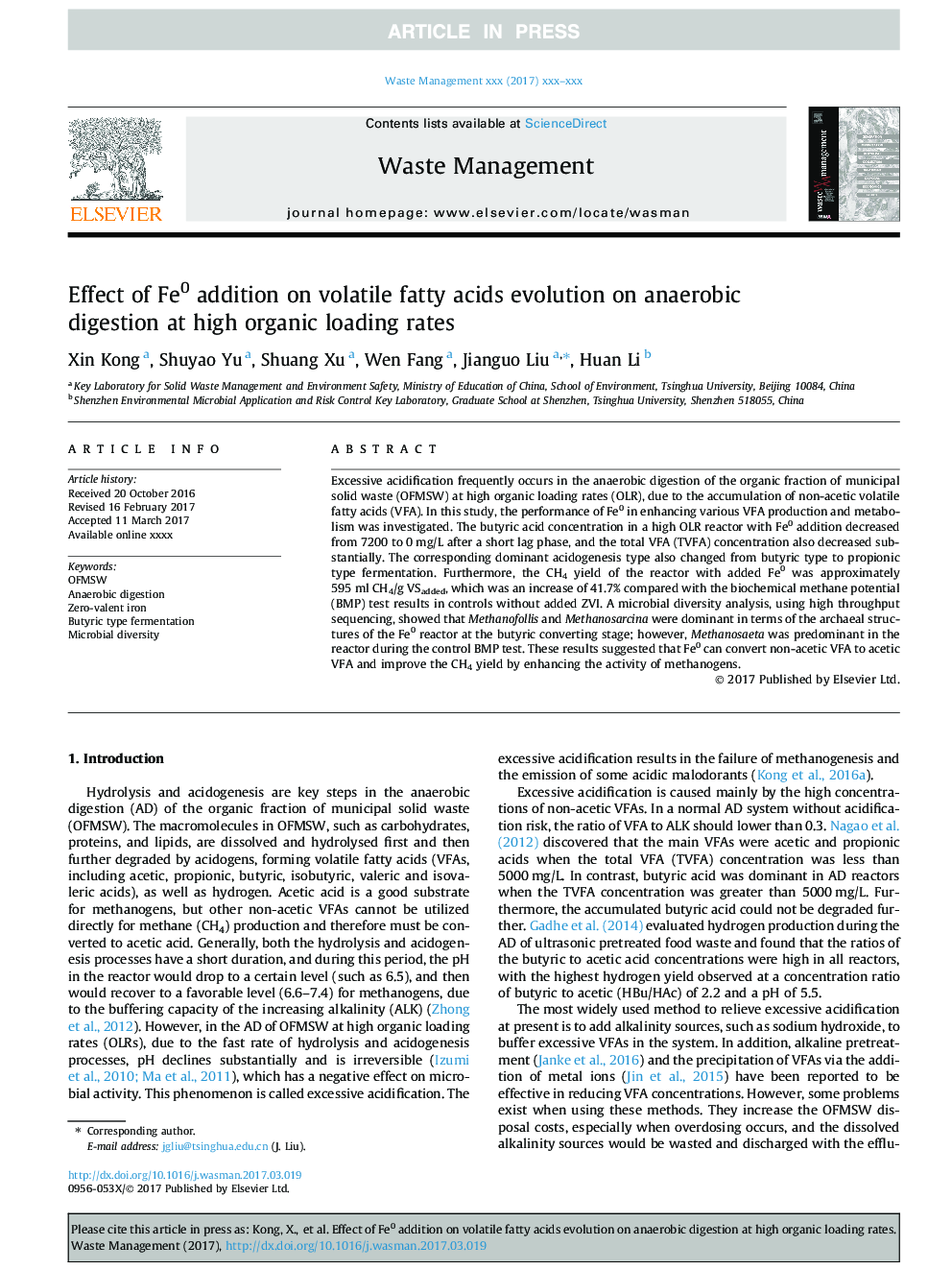| Article ID | Journal | Published Year | Pages | File Type |
|---|---|---|---|---|
| 8870376 | Waste Management | 2018 | 9 Pages |
Abstract
Excessive acidification frequently occurs in the anaerobic digestion of the organic fraction of municipal solid waste (OFMSW) at high organic loading rates (OLR), due to the accumulation of non-acetic volatile fatty acids (VFA). In this study, the performance of Fe0 in enhancing various VFA production and metabolism was investigated. The butyric acid concentration in a high OLR reactor with Fe0 addition decreased from 7200 to 0Â mg/L after a short lag phase, and the total VFA (TVFA) concentration also decreased substantially. The corresponding dominant acidogenesis type also changed from butyric type to propionic type fermentation. Furthermore, the CH4 yield of the reactor with added Fe0 was approximately 595Â ml CH4/g VSadded, which was an increase of 41.7% compared with the biochemical methane potential (BMP) test results in controls without added ZVI. A microbial diversity analysis, using high throughput sequencing, showed that Methanofollis and Methanosarcina were dominant in terms of the archaeal structures of the Fe0 reactor at the butyric converting stage; however, Methanosaeta was predominant in the reactor during the control BMP test. These results suggested that Fe0 can convert non-acetic VFA to acetic VFA and improve the CH4 yield by enhancing the activity of methanogens.
Related Topics
Physical Sciences and Engineering
Earth and Planetary Sciences
Geotechnical Engineering and Engineering Geology
Authors
Xin Kong, Shuyao Yu, Shuang Xu, Wen Fang, Jianguo Liu, Huan Li,
